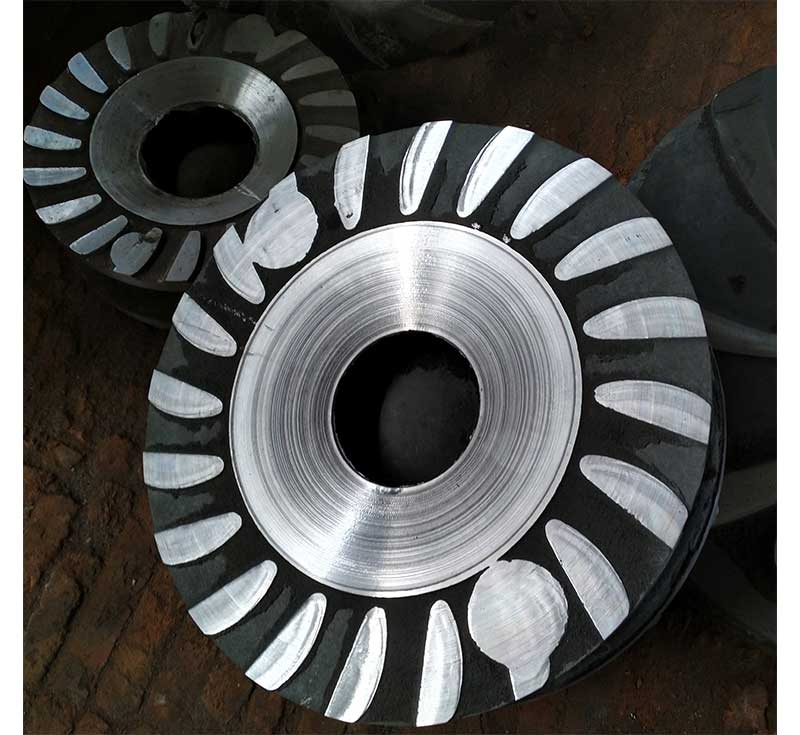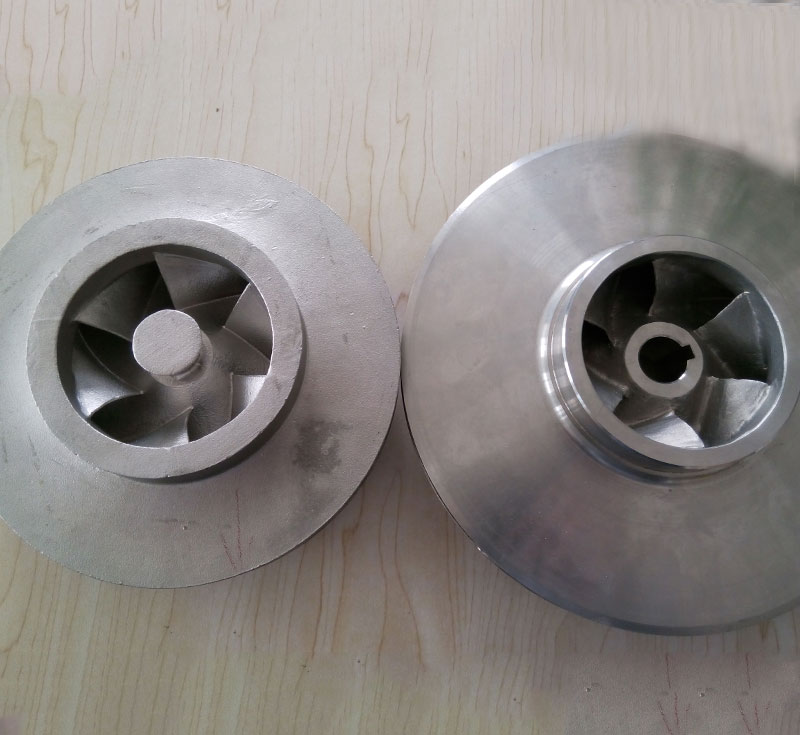OEM Pump Impeller Casting Manufacturers
Size range from 0.1 kg to over 1000 kg For pump, impeller and valve castings
Heat treatments (annealed, hardened and tempered, normalized and tempered, fully hardened, age hardened, surface hardened, etc.)
Proprietary and industry standards (ISO 9001::215)
NDT (non-destructive testing) at all levels
Small runner pattern capability
Impeller casting expertise
Excellent performance, smooth surface finish
Prototype casting
Drawing:Provide by customer, or design according as the sample,in the format of Pro/E, Auto-CAD, SOLIDWORK, CAXA, UG, CAD, CAM, CAE, STP, IGES, etc.
An Original Equipment Manufacturer (OEM) pump impeller refers to the impeller component of a pump that is manufactured by the original equipment manufacturer or supplier. The impeller is a crucial part of a centrifugal pump and is responsible for drawing fluid into the pump and imparting energy to it for the pumping action.

OEM pump impellers are typically designed and manufactured specifically for a particular pump model or brand. They are engineered to meet the performance requirements and specifications of the pump, ensuring optimal fluid flow, efficiency, and durability.
The manufacturing process for OEM pump impellers may involve the following steps:
- Design: Engineers create a design for the impeller, considering factors such as fluid properties, flow rates, head requirements, and pump characteristics. Computer-aided design (CAD) software is often used to develop the impeller geometry.
- Material Selection: The appropriate material for the impeller is chosen based on factors like fluid compatibility, temperature, corrosion resistance, and mechanical strength. Common materials used for impellers include stainless steel, bronze, cast iron, and various alloys.
- Pattern Creation: A pattern is made based on the impeller design. This pattern can be produced using various techniques such as CNC machining, 3D printing, or traditional molding methods.
- Casting: The impeller pattern is used to create a mold, typically made of sand or other mold materials. Molten metal is then poured into the mold, and the impeller shape is formed as the metal solidifies. Casting methods like investment casting or sand casting are commonly employed.
- Finishing: After the casting process, the impeller is removed from the mold and undergoes finishing operations. This may include removing excess material, grinding, polishing, and machining critical surfaces to achieve the desired dimensions and surface finish.
- Balancing: Impellers need to be balanced to minimize vibration and ensure smooth operation. Dynamic balancing techniques are employed to achieve the required balance by removing material from specific locations or adding balancing weights.
- Quality Assurance: The finished impeller is subjected to quality control measures, including dimensional inspection, material testing, and non-destructive testing methods like X-ray or ultrasound to detect any defects or irregularities.
- Packaging and Distribution: Once the impellers pass the quality checks, they are packaged and prepared for distribution to the pump manufacturers or end-users.
It’s important to note that OEM pump impellers are typically designed and produced by the original equipment manufacturer or their authorized suppliers. However, aftermarket impellers may also be available from other manufacturers as replacements or alternative options for specific pump models.
Hengke Metal has been working with customers in the pump, impeller, and valve casting industries for many years. Because of this specialization, many of the global leaders in your industry have chosen us as their pump, impeller, and valve impeller casting manufacturers and OEM suppliers.
We understand the unique needs and concerns of your industry and have developed and perfected the art of manufacturing impellers.
We can machine, key slot, balance and assemble impellers to your specifications. Our decades of experience in fabricating and testing bearing castings, pump housings/valve bodies, worm housings, valve covers, diffusers, valve flaps, and more are invaluable in manufacturing your precision pump and valve components.

Pump investment casting process
Each process of casting pumps is performed in strict accordance with standard operating procedures. The main processes of casting pumps are as follows:
casting simulation, mold development, raw material inspection, wax molding, shell making, metal pouring, cleaning and heat treatment, inspection, warehouse packaging and transportation.
Applications for professional cast impellers include
Food mixing units
Water jets
Washing machines
Air pumps
and many more
Our castings are available for the following industries.
Industrial Casting
Defense/Marine
Water Treatment
Energy / Petrochemical
Chemical industry
Food & Beverage
Pharmaceuticals
Heat Treatment
Application:
Pump & Valves/Food /Chemical
Food mixing units
Water jets
Washing machines
Air pumps
And much more
Keywords:
Pump impeller/Stainless Steel/Austenitic stainless steel/Investment casting
Questions You May Have About Pump Casting
1. How can I get the quotation?
Please send us your drawing together with the weight, material and quantity requireed.
2. If we don’t have the drawing, can you make a drawing for me?
Yes, we can scan your sample and make the drawing for your confirmation.
3. What kind of file format you can read?
PDF, IGS, DWG, STEP, etc.
4. How small and how big you can cast?
1kg~2000kg
5. What is the MOQ?
1pc
6. What is the sample and order lead time?
Sample time: 6-8 weeks including tooling construction. Order time: 4-6 weeks after sample approval, it can be flexible due to complexity or quantity.
7. What is your payment terms?
L/C,D/P, T/T are accepted.
Tooling:100% in advance, Order:50% deposit, 50% before shipment.
8. What kind of patterns do you always construct and use?
We always cast make and cast with aluminum patterns.
